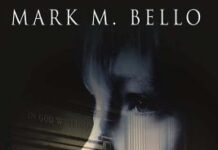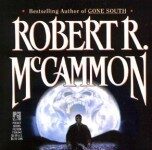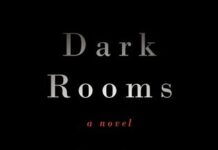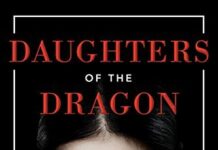In the quiet confines of a modest Parisian apartment, Patrick Süskind’s The Pigeon invites readers into an intense exploration of solitude, anxiety, and the fragile boundaries of human existence. This slim novel, often overshadowed by Süskind’s more famous works, unfolds with a deceptively simple narrative that belies its profound psychological depth. In this review,we will unpack the layers of meaning embedded in The Pigeon,examining how Süskind’s meticulous prose and unsettling atmosphere craft a compelling portrait of one man’s confrontation with the unexpected,and the silent chaos that ensues.
The Intricate Portrait of Isolation and Its Psychological Depths Explored in The Pigeon
At the heart of The Pigeon lies a profound exploration of the human psyche, where isolation is not merely a physical state but a labyrinth of intricate emotions and vulnerabilities. Patrick Süskind masterfully paints the protagonist’s internal world with delicate strokes, revealing how a seemingly trivial event-the sudden presence of a pigeon-can unravel the fragile balance of a solitary life. This bird becomes a symbol of intrusion,an external manifestation of the character’s deep-seated fears and anxieties. Through subtle narrative shifts, readers witness the permeation of existential dread, where isolation morphs into an almost palpable force, shaping his perceptions and decisions.
What makes this psychological portrait compelling is Süskind’s meticulous attention to detail and layered symbolism, conveyed through:
- Introspective monologues that illuminate the fragile boundaries of sanity.
- Urban solitude as both refuge and cage within a noisy metropolis.
- Micro-moments of anxiety that mirror profound existential crises.
| Element | psychological Importance |
|---|---|
| Locked Door | Barrier between the protagonist and the outside world |
| The Pigeon | Symbol of disruption and fear of change |
| Empty Paris Streets | Amplification of loneliness and alienation |
Symbolism Embodied by the Pigeon and Its Role in Reflecting the Protagonist’s Inner Turmoil
In Süskind’s narrative, the pigeon serves as a potent emblem of disruption and introspection, mirroring the protagonist’s fragile psyche. More than a mere bird,it encapsulates elements of unexpected intrusion and the fragile boundary between control and chaos. The sudden appearance of the pigeon in the protagonist’s meticulously ordered life acts as a catalyst, forcing him to confront buried anxieties and internal fractures that had long gone unexamined. Rather than representing freedom or escape, this pigeon embodies confinement - trapped in a world that seems equally restrictive as the protagonist’s own existence.
The layered symbolism extends beyond mere disruption. The pigeon’s presence ignites a psychological unrest that unfolds through key motifs intertwined with the protagonist’s emotional state:
- Isolation: The solitary pigeon mirrors the protagonist’s self-imposed loneliness, underscoring themes of alienation.
- Anxiety: Its unexpected arrival shatters the calm,reflecting the undercurrents of apprehension beneath the surface.
- Transformation: The episode acts as a turning point, nudging the protagonist toward internal reckoning.
| Symbolic Element | Reflection in Protagonist’s Psyche |
|---|---|
| Coexistence with chaos | Struggle to maintain order amidst unpredictability |
| Entrapment | Feeling of being caged within one’s own life |
| Silent observation | Heightened self-awareness and scrutiny |
Narrative Style and Its Contribution to the Atmosphere of Unease and Contemplation
Patrick Süskind’s narrative approach is a masterclass in subtlety, weaving a tapestry of introspection that plunges readers into the claustrophobic world of Jonathan Noel. The prose is meticulously paced, mirroring the protagonist’s obsessive thought patterns and the looming tension of his monotonous existence. By blending a detached third-person perspective with moments of intimate psychological insight, Süskind creates a persistent undercurrent of unease. This narrative stance not only reflects Jonathan’s fragile mental state but also invites readers into a reflective space where every small event-the sight of a pigeon, the sound of footsteps-resonates with amplified significance.
- Precision in language fosters a clinical,almost hypnotic rhythm.
- Minimalist descriptions heighten the focus on internal conflict.
- Repetitive motifs underscore the inevitability of despair and isolation.
The atmosphere blossoms through a delicate balance of stark realism and poetic contemplation. Süskind’s style encourages readers to linger on the mundane,transforming everyday moments into profound contemplations on solitude and fear. The carefully controlled tone oscillates between tension and calm, creating an emotional dissonance that unsettles while provoking deeper philosophical questions. This dichotomy is elegantly encapsulated in the table below, which contrasts elements of the narrative that evoke discomfort with those that invite meditation, revealing how the style orchestrates a nuanced emotional experience.
| Element | Unease | Contemplation |
|---|---|---|
| Setting |
Confined Parisian apartment |
Quiet, early morning stillness |
| Character Focus |
Paranoia about the pigeon |
Reflection on loneliness |
| Language |
Stark, clinical prose |
Lyrical descriptions |
The Subtle dance Between Routine and Disruption as a Central Theme in Süskind’s Storytelling
At the heart of Süskind’s narrative lies an intricate balance between the comfort of predictability and the unsettling force of unexpected change. the protagonist’s life is meticulously structured, his days a carefully choreographed routine that shields him from the chaotic world beyond. this rigid rhythm, though, is abruptly punctuated by the intrusion of a seemingly insignificant pigeon-an agent of disruption that triggers profound internal turmoil. Süskind masterfully captures how such a minor disturbance can ripple through the psyche, unraveling the fragile equilibrium that routine affords.
through his storytelling, Süskind invites readers to reflect on the paradoxical relationship between order and chaos, illustrating that disruption often serves as a catalyst for self-examination and transformation. The narrative progression can be summarized as follows:
| Routine Elements | Disruptive Forces | Resulting Effects |
|---|---|---|
| Predictable daily patterns | Unexpected pigeon encounter | Emotional and psychological destabilization |
| Controlled environment | Invasion of spontaneity | Heightened awareness of vulnerability |
| Isolation by choice | External intervention | Forced confrontation with inner fears |
- Routine acts as a protective shell, guarding against the unpredictable.
- Disruption exposes hidden anxieties and challenges complacency.
- Süskind’s style blends subtle symbolism with psychological intensity.
Cultural and Historical Context Influencing The Pigeon’s Character Development and Setting
Set against the backdrop of post-war Paris, The Pigeon crafts a nuanced reflection of a society grappling with lingering anxieties and the fragile pursuit of normalcy. The protagonist’s meticulous routine and claustrophobic existence echo broader cultural sentiments of isolation and mistrust prevalent in the era. Each element in his environment-from the cold, austere apartment to the indifferent streets-mirrors an emotional landscape scarred by historical upheaval, where stability feels perpetually at risk. This context shapes not only the setting but also infuses the character’s psyche with a palpable tension between his desire for order and his overwhelming fear of disruption.
Understanding this historical fabric enriches the reading experience, revealing layers beneath the surface of Tomas’s anxiety. The following table highlights key cultural influences that subtly sculpt the narrative’s mood and shape character development:
| Aspect | Impact on Character | Setting Influence |
|---|---|---|
| Post-War Trauma | Heightened sense of vulnerability | Somber, confined urban spaces |
| Economic Transition | Uncertainty and conservatism | Modest, utilitarian interiors |
| Social Conformity | Isolation through self-imposed rules | Routine-driven environment |
- Psychological Realism: The protagonist’s internal battles reflect widespread cultural fears about stability and change.
- Urban Alienation: Paris serves not as a romantic backdrop but as a stark maze emphasizing detachment.
- Symbolism of the Pigeon: A representation of intrusive chaos in an or else controlled life.
The Use of Minimalism and Precision Language to Convey profound Emotional Complexity
Patrick Süskind’s prose in The Pigeon is a testament to the power of minimalism – a stripped-down narrative technique that unravels the depth of its protagonist’s psyche without superfluous embellishment. Every sentence serves a deliberate purpose, creating a rhythm that mirrors the quiet anxiety pervading Jonathan Noel’s world. This precision crafts a tension that pulls readers inward, inviting them to experience the minutiae of solitude and fear with startling intimacy. The subtle yet sharp observations reveal an emotional landscape where even the smallest detail, like the unexpected presence of a pigeon, triggers profound introspection and existential dread. Süskind’s succinct style ensures that nothing is wasted; instead, each word echoes with layers of meaning that resonate far beyond the page.
The economical use of language also manifests through a poignant balance between clarity and ambiguity.Süskind’s choice to present complex emotions in sparse yet evocative phrases encourages readers to fill the spaces between the lines, fostering a personal connection to the narrative. This dynamic is evident in the way jonathan’s internal turmoil-caught between despair and desperate hope-is conveyed not through dramatic exposition but through carefully curated glimpses and pauses. Consider the following contrasts that Süskind masterfully weaves:
| Minimal Words | Profound Impact |
|---|---|
| “Nothing changed” | Captures paralyzing stasis in life |
| “The pigeon sat quietly” | Symbolizes subtle threat and intrusion |
| “He felt small” | Expresses emotional vulnerability concisely |
- Economy of expression intensifies emotional resonance.
- precision shapes mood without heavy-handedness.
- Subtle symbolism emerges through controlled diction.
Through this minimalist lens, Süskind not only deepens the narrative’s emotional complexity but also challenges readers to engage actively with Jonathan’s solitude. The precision in language becomes an invitation rather than a limitation, urging reflection on the universality of fear, alienation, and the fragile fabric of human existence.
How The Pigeon Challenges Readers to Reflect on Human Vulnerability and Existential Fear
At the heart of The Pigeon lies a powerful exploration of the fragility of the human psyche when confronted with unexpected disruptions. Süskind masterfully uses the protagonist’s encounter with a lone pigeon as a metaphor for the sudden invasions of anxiety that shatter the illusion of control in our daily lives. The bird’s mere presence triggers an internal avalanche of fear, capturing how vulnerability can lurk beneath even the most seemingly stable routines. Readers are invited to step into the shoes of a man whose carefully ordered existence teeters on the edge, prompting a visceral understanding of how existential dread can emerge from the smallest, seemingly insignificant moments.
This narrative provokes reflection on the delicate balance between order and chaos, highlighting that human vulnerability is not just a physical state but deeply psychological. The story encourages readers to consider:
- The ways in which minor disturbances can unleash profound internal turmoil
- How fear manifests as both a paralyzing force and a catalyst for self-awareness
- The universal struggle to find meaning amid randomness and uncertainty
Instead of offering clear resolutions, Süskind presents a mirror to our collective existential fears, inviting us to embrace the discomfort that comes with recognizing our own precariousness in an unpredictable world.
| Theme | Representation in The Pigeon |
|---|---|
| Human Vulnerability | Unexpected fear triggered by a pigeon’s presence |
| Existential Fear | The protagonist’s spiraling anxiety and loss of control |
| Isolation | Symbolized through the man’s solitary life and internal conflict |
Thoughtful Recommendations for Readers Seeking a Concise Yet Profound Psychological Exploration
For readers drawn to narratives that distill complex psychological undercurrents into succinct storytelling, The Pigeon offers a masterclass in minimalistic depth. Süskind’s prose is lean yet evocative, guiding us through the fragility of human existence with an economy of words that belies its profound existential inquiry. This novella is ideal for those who appreciate the power of subtlety-where every sentence acts as a deliberate brushstroke painting the psyche of a man caught in the unsettling grip of solitude and disruption.
When diving into this compact narrative, keep in mind these key thematic pillars that enrich the reading experience:
- Existential Anxiety: The protagonist’s encounter with a simple pigeon spirals into an intense confrontation with chaos and order.
- Isolation and Connection: Süskind explores how solitude shapes identity and perception.
- Symbolism of Everyday Objects: Objects carry layered meanings that reveal the protagonist’s inner turmoil.
| Aspect | Impact on Reader |
|---|---|
| Conciseness | Allows reflection without overwhelming |
| Psychological Depth | Invites empathy and self-examination |
| Atmospheric Tension | Creates an immersive mood with subtle cues |
The Impact of The Pigeon on Contemporary Literary Discussions Around Solitude and Anxiety
Patrick Süskind’s The Pigeon has become a cornerstone in contemporary literary conversations, especially those probing the intricate layers of solitude and anxiety. The novella dives deep into the psyche of Jonathan Noel, a man whose orderly existence unravels with the unexpected presence of a pigeon. This seemingly trivial event metaphorically captures the fragility of human comfort zones, igniting discussions about how solitude can teeter between sanctuary and prison. Scholars and readers alike often highlight Süskind’s minimalist yet evocative prose as a mirror reflecting modern society’s latent fears around isolation, making the work a frequent point of reference in analyses of urban alienation.
The Pigeon also invigorates dialogues on how anxiety is experienced in seemingly mundane moments. The novella’s nuanced portrayal encourages a reevaluation of internal turmoil, exposing the subtle triggers that can disrupt mental equilibrium. Key themes often explored include:
- The thin veil between calm and chaos in daily life
- Micro-aggressions of routine disturbances and their psychological weight
- The embodiment of fear through symbolic figures like the pigeon
| Theme | Literary Element | Contemporary Relevance |
|---|---|---|
| Solitude | Isolation imagery | Urban loneliness |
| Anxiety | Symbolism of disorder | Mental health awareness |
| Routine | Repetitive narrative style | Cultural dependence on normalcy |
comparative Insights Between The Pigeon and Other Works Exploring Loneliness and Human Connection
Patrick Süskind’s The Pigeon stands out within the literary exploration of loneliness by focusing intensely on the protagonist’s minute psychological shifts, inviting readers to dwell on the precarious balance between isolation and the desire for human connection. Unlike works such as Albert Camus’s The Stranger or Raymond Carver’s short stories, which portray loneliness through broader existential or situational lenses, Süskind zeroes in on the infinitesimal moment when a seemingly trivial event-a pigeon perching outside-becomes an existential crisis. This microcosmic approach emphasizes how loneliness can be both a silent companion and a disruptive force, illustrating the fragile architecture of human comfort and the invisible threads tethering us to society.
When we juxtapose the Pigeon with other narratives rooted in solitude, several thematic and stylistic differences emerge. As a notable example:
- Emotional intimacy: Süskind delves deeply into inner turmoil rather than external interactions, contrasting with works like Norwegian Wood by Haruki Murakami that explore loneliness through relational dynamics.
- symbolism: The pervasive symbol of the pigeon itself acts as an almost surreal manifestation of intrusive loneliness, unlike the more realistic portrayals in Charles bukowski’s writings.
- Perspective: The Pigeon employs a confined narrative viewpoint, mirroring the protagonist’s narrow social world, while other authors might offer a more expansive societal critique.
| Aspect | The Pigeon | Other Works |
|---|---|---|
| Focus | Micro-moment psychological crisis | Broad existential themes |
| Symbolism | central and surreal | Subtle or realistic |
| Narrative Scope | Confined, introspective | Varied, social-economic contexts |
Ultimately, Süskind’s literary contribution reshapes how solitude is understood-not as mere absence of company, but an ever-present psychological sediment layering everyday moments with profound unease. This nuanced portrayal sets The Pigeon apart,inviting readers to reconsider the often invisible boundaries that both separate and silently connect individuals within the human experience.
Exploring the Moral Ambiguities and Ethical Questions Raised Throughout The Pigeon’s Narrative
At its core, The Pigeon challenges readers to confront the fragile boundaries between order and chaos in human existence. The protagonist’s obsessive need for control is both relatable and unsettling, blurring the distinction between rational caution and paralyzing fear. Süskind invites us to question: when does self-preservation tip into self-imprisonment? This tension exposes the moral gray zones where everyday decisions ripple profoundly across one’s sense of identity. Is the act of evicting the pigeon an act of preserving sanctity, or an infringement upon nature’s right to coexist within shared spaces? These ethical dilemmas underscore how minute moments become crucibles for larger existential questions.
- Isolation vs. Connection: How far can solitude stretch before it becomes loneliness, and at what cost?
- Control vs.Acceptance: Does mastery over one’s environment foster peace,or breed anxiety?
- Freedom vs. Security: Can one truly feel free when constantly hedged in by invisible boundaries?
| Ethical Question | Implications |
|---|---|
| Ownership of space | Who holds the right to occupy and maintain control of a shared environment? |
| Moral responsibility | Does protecting oneself justify potentially harming another living being? |
| Psychological suffering | How do internal fears reshape morality and actions? |
Ultimately, the narrative does not offer tidy resolutions but instead holds a mirror to our own ethical positions, forcing introspection on how fear and loneliness distort our moral compass. The Pigeon’s story is a delicate dance between empathy and judgment, reminding us that moral clarity is often elusive when viewed through the lens of solitude’s shadows.
The Artistry Behind The Pigeon’s Cover and Visual Storytelling Elements Enhancing Reader Experience
From the moment you lay eyes on the cover of The Pigeon,the artistry promptly whispers the novella’s thematic core. The subtle use of muted, earthy tones mirrors the protagonist’s restrained existence, while the minimalist illustration-often featuring a lone pigeon perched against an urban backdrop-evokes a sense of isolation and fragile unease. This design choice not only captures the essence of loneliness but also acts as a silent prelude to the narrative’s tension. The interplay between shadow and light in the cover art further enhances the feeling of impending disruption that defines the protagonist’s world.
Visual storytelling extends beyond the cover, frequently enough enhanced through typographic choices and layout elements that create an immersive reading experience. The deliberate spacing and font selection reflect the protagonist’s meticulous yet constrained mindset, allowing readers to subconsciously sync with his rhythm. Consider the following visual elements commonly employed in editions of The Pigeon,each contributing to a nuanced emotional landscape:
- Monochromatic palettes: Emphasize solitude and unease
- Clean,serif fonts: Convey introspection and seriousness
- Sparse page layouts: Reflect emptiness and internal contemplation
| Visual Element | Reader Impact |
|---|---|
| Muted Colors | Promotes a somber,reflective mood |
| Negative Space | Highlights isolation and tension |
| Deliberate Typography | Enhances emotional pacing |
Understanding Patrick Süskind as a Writer and the Recurring Themes Shaping His Literary Legacy
Patrick Süskind’s literary voice is marked by an exquisite interplay of psychological depth and minimalism, a combination that hypnotically draws readers into the inner worlds of his characters. His narratives often revolve around individuals grappling with intense solitude, alienation, and the absurdity of existence. In The pigeon, this is embodied through Jonathan Noel, a man whose rigid existence is disrupted by the unexpected presence of a pigeon, transforming a seemingly trivial event into an existential crisis.Süskind’s prose reveals his fascination with the fragility of routine and how even the smallest disturbances can unravel a person’s sense of security, making solitude feel overwhelming rather than peaceful.
Among the recurring themes that color Süskind’s legacy, several stand out prominently:
- The human psyche’s vulnerability – exploring the anxieties lurking beneath the surface of everyday life.
- The duality of comfort and confinement – routine as both a sanctuary and a prison.
- The power of sensory experience – especially olfaction, sound, and visual cues, which Süskind uses to evoke mood and introspection.
- The absurdity within the mundane – highlighting how ordinary events often expose deeper existential truths.
| Theme | Representative Work | Narrative Focus |
|---|---|---|
| Solitude and Alienation | The Pigeon | Internal conflict triggered by a minor disruption |
| Sensory Perception | Perfume: The Story of a Murderer | Olfactory obsession and identity |
| Routine vs. Freedom | The Pigeon | the fine line between comfort and entrapment |
In the quiet closing pages of The Pigeon,Patrick Süskind leaves us with more than just a story – he offers a subtle meditation on the fragile balance between order and chaos within our own lives. This review has journeyed through the nuances of solitude, anxiety, and the unexpected disruption of the mundane, but the true power of the novella lies in its ability to resonate silently, long after the final word is read. Whether you seek a philosophical reflection or a glimpse into the human psyche’s delicate knots, The Pigeon quietly invites you to unpack your own solitude, one page at a time.












